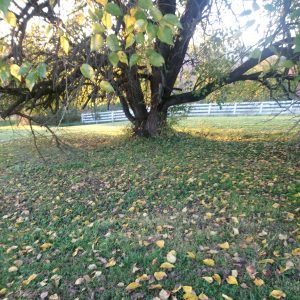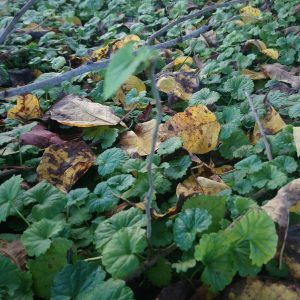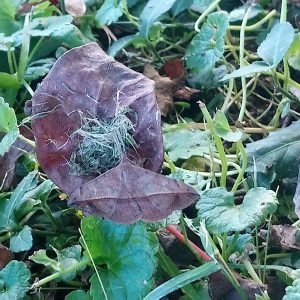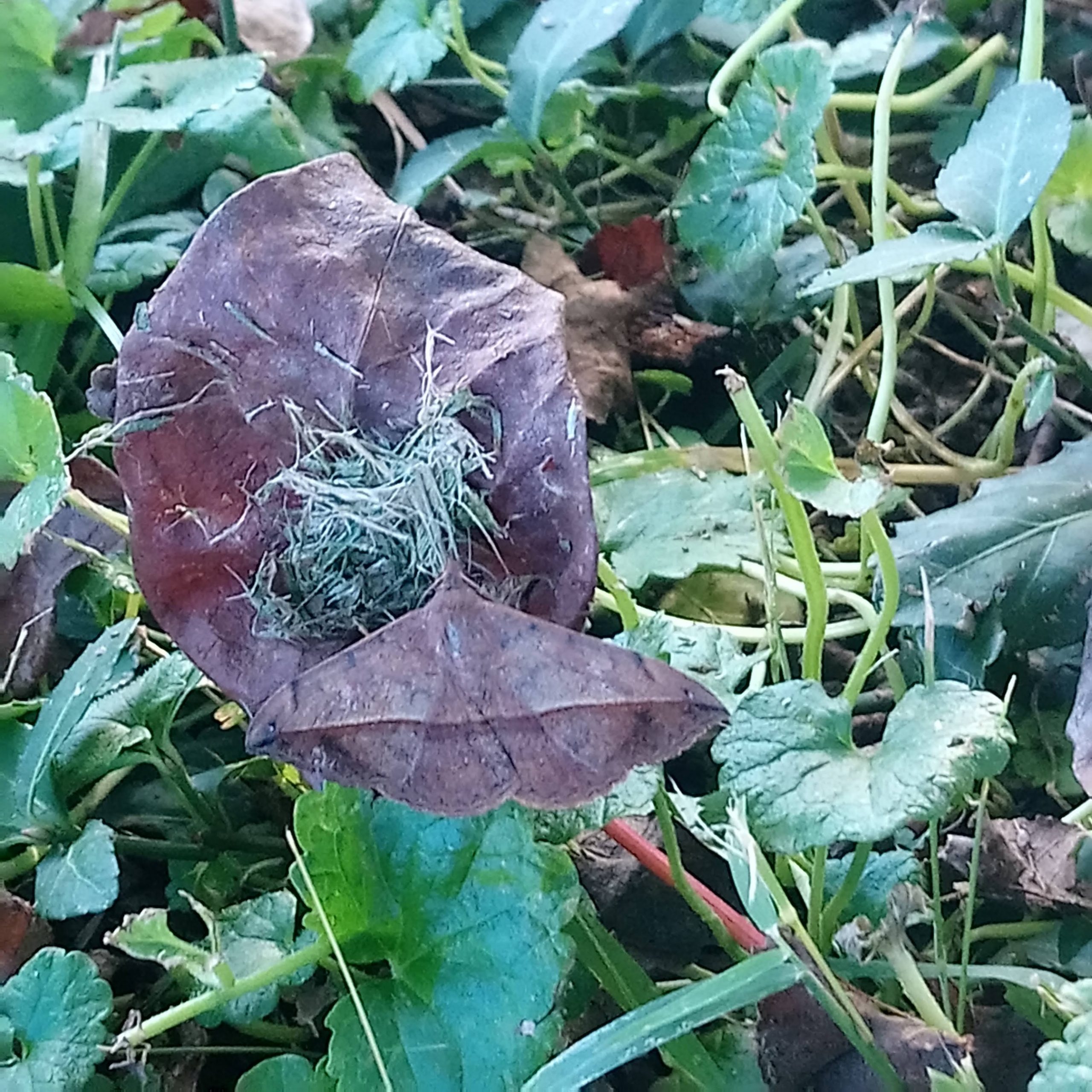October 27th
5:18-6:04 PM
70 degrees
Fall has finally reached my spot in terms of appearance; the litter of hundreds of leaves around the tree is definitely the most dramatic change that has occurred so far. Sitting under the tree, things felt much different, and it took a few minutes to realize it was just that it feels very exposed now. It was much easier to observe things like insects with the reduction in foliage – and the number of spider webs has, unfortunately, increased greatly in the lower limbs of the tree. I even had a few arachnid visitors float slowly by my head, carried by silk and the wind. I really don’t want to think about how many there’s been that I haven’t seen. A surprising discovery was that a few red leaves have fallen to the ground, and they’re very different in size, shape, and margin type from the other leaves of the tree. Only a few red leaves remain in the tree top and the canopy is too far up to see clearly, but I suspect some other species of plant has grown up the tree and produced these different leaves.

Two of my objects have also changed pretty dramatically. The least changed is perhaps the branch that touches the ground; as I mentioned, the most noticeable difference is there are many more spiderwebs. I also think the limb may have broken a little more, as more branches seem to be touching the ground. The plant that had previously lost all of its leaves is surprisingly sprouting three new ones in the middle of fall (before and after pictured below). Finally, the stick was difficult to find as ivy and fallen leaves have covered it. It seems that it is much shorter than before, but whether that is from natural rot or a trip through a lawn mower, I don’t know. The plants I identified last time are mostly the same, but the knapweed flower has disappeared.


The plot I chose to observe was because of an interesting bug I saw there during the first fifteen minutes. It rested on the ground close to me for what must have been some time, and I only noticed it when I moved too close to it and it flew to a different leaf. It is the second insect I’ve seen that closely resembles the plant life here – where the planthopper resembled the living ivy, this different insect looked like the brown fallen leaves. It seems too perfect a match to be coincidence, and I wonder if it undergoes a seasonal appearance change. In the plot, I noticed at least three species of plant – two that I’d seen before, the ivy and a grass, and one I hadn’t noticed as it grows close to the ground under the ivy.

While observing the plot I decided to take a count of the leaves – there were about 30 yellow, 7 red, and an uncountable about of crumbling brown leaves. They seemed to provide a good home for the two kinds of spiders I saw – one tiny and white and one a bit larger and black. The white spider seemed to have built webbing between a few of the fallen leaves and travelled back and forth between two leaves for a while. In addition to the living things making use of the leaves, it seems the crumbling and decomposing leaves are already being incorporated into the soil.
This trip was good for seeing things from a new perspective. Things have been changing with every visit, but it’s easy to fall into thinking you’re getting used to the view when the differences are small. Focusing on a small area in the context of the large change in appearance of the tree put into perspective just how much there is to observe.


You are a lot braver than me sitting near to so many spiders! I love nature and I recognize that they do a lot for us, but I’d rather keep my distance. Fantastic job, Kady!
You are so right! These small changes really ask us to observe intentionally. I hope the spider web will still be there on your next observation. I enjoyed reading your blog, Kady!
I enjoyed your blog Kady. there is alot to see in a small space – how much do we miss as we hurry by? have you identified that tree yet?